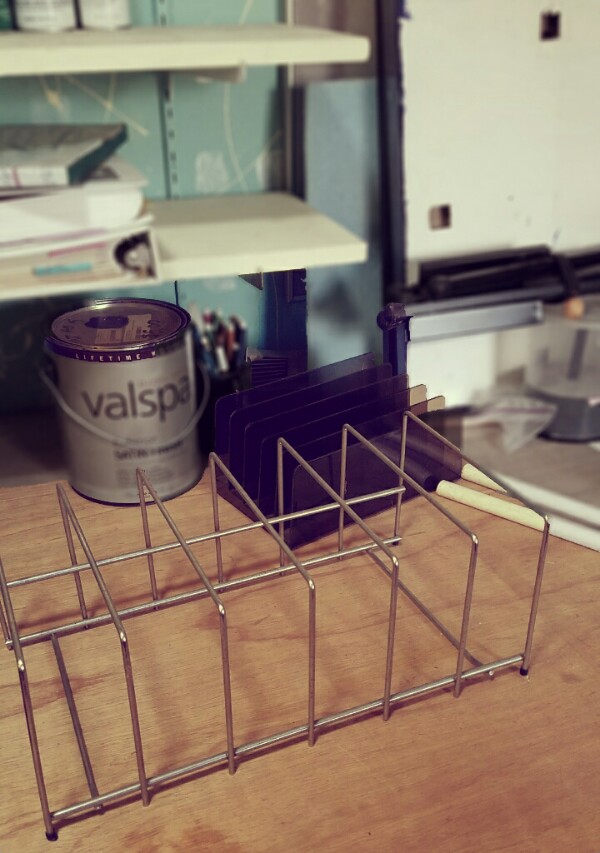
Wire file folder desktop rack.
I’m cleaning off one of my desks. At the back of the desk, I found two wire racks.
“What is it?” I wondered. And then it hit me: this is one of those racks that supposed to hold file folders upright, at the back of your desk, so you can see them all.
Death on a stick. Look carefully: there’s another one of these racks, in smoke plastic, right behind the wire rack.
I bring these home, from the swap shed, from the thrift shop, & I think somehow, if I can see all the files I’m working on, I’ll be more on top of things.
Instead, what happens is that the racks get pushed to the back of the desk, or they get full of file folders that I never look at, and maybe they get dumped. They don’t serve their intended purpose, certainly, not in my house; not on my desk.
“Hi Ho, Hi Ho, to the metal bin we shall go,” just as soon as my local dump opens again after the ice storm shut down. That’s why I’m cleaning out today anyway–the ice storm. Can’t go anywhere else; might as well create some more space for myself.
One day, I will come to terms with my organizing style, and quit bringing these things home. That may or may not be now. Don’t make promises about what’s going to happen tomorrow, when I find the perfect matching set of desk accessories. For today this will go.

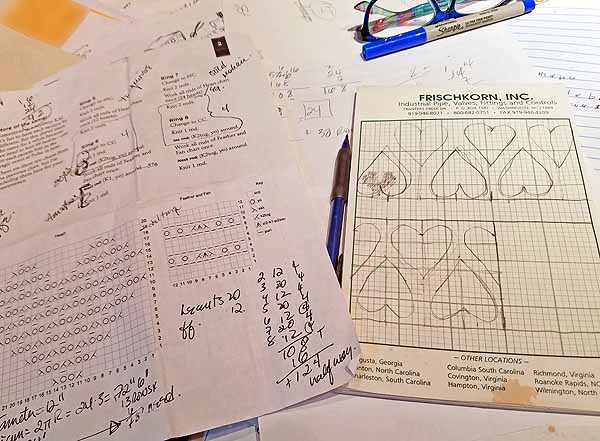
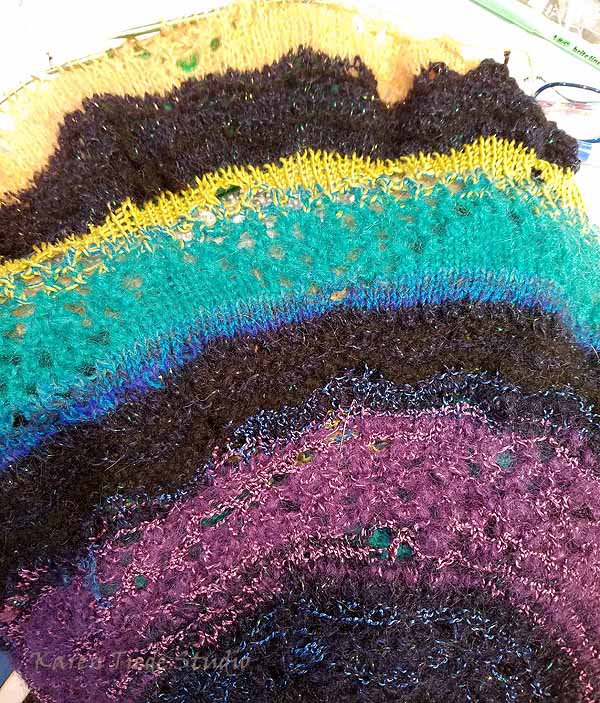
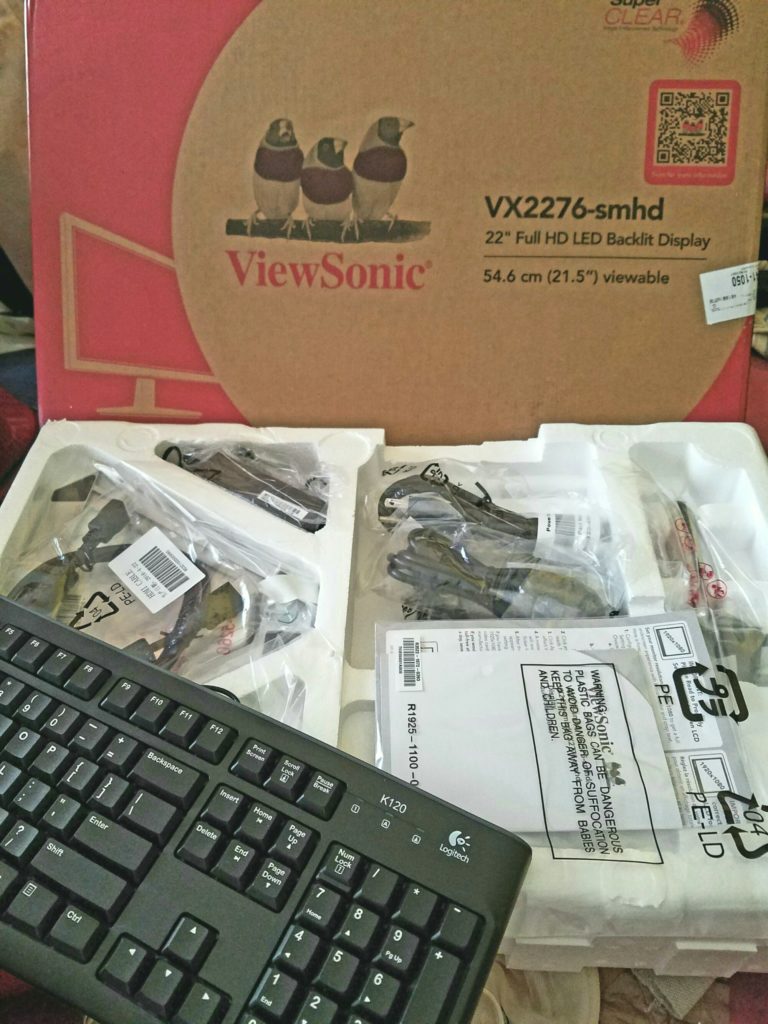

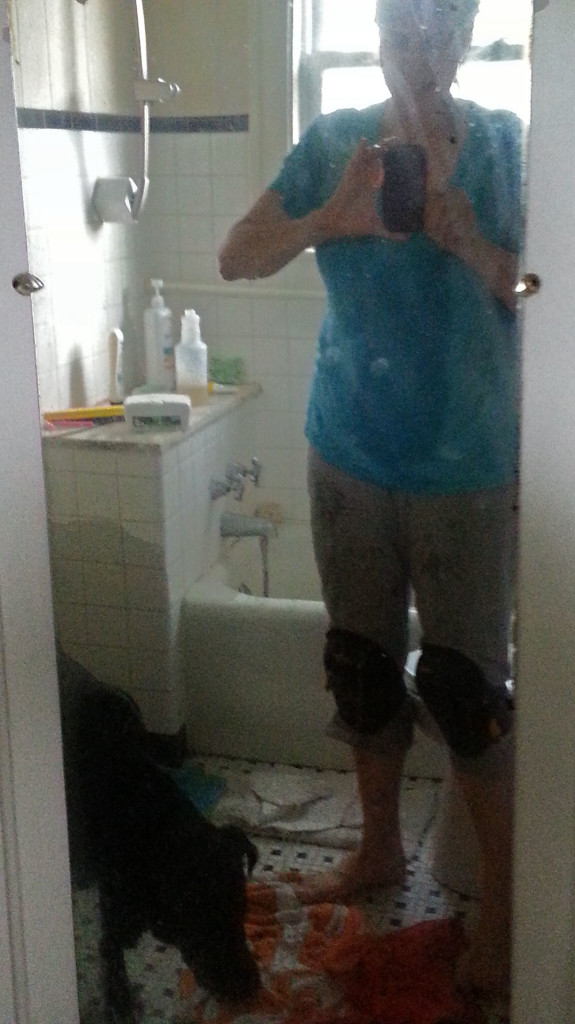
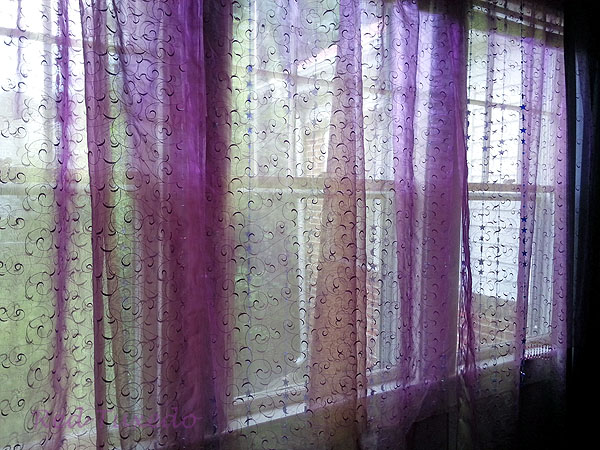
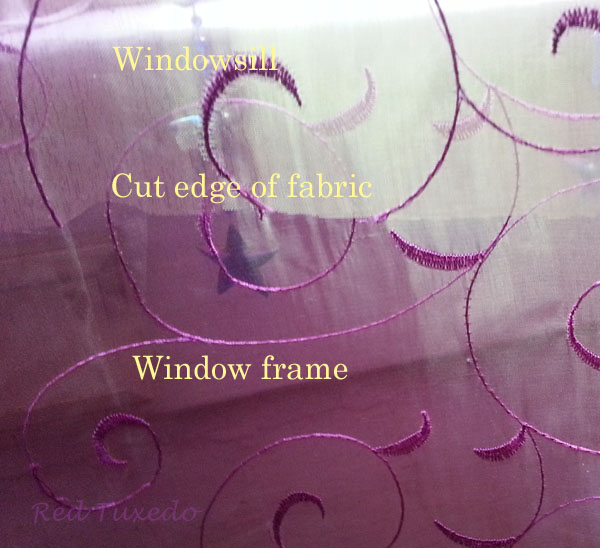
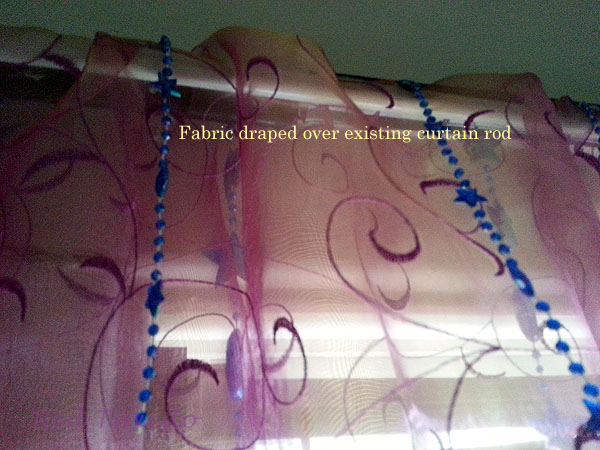
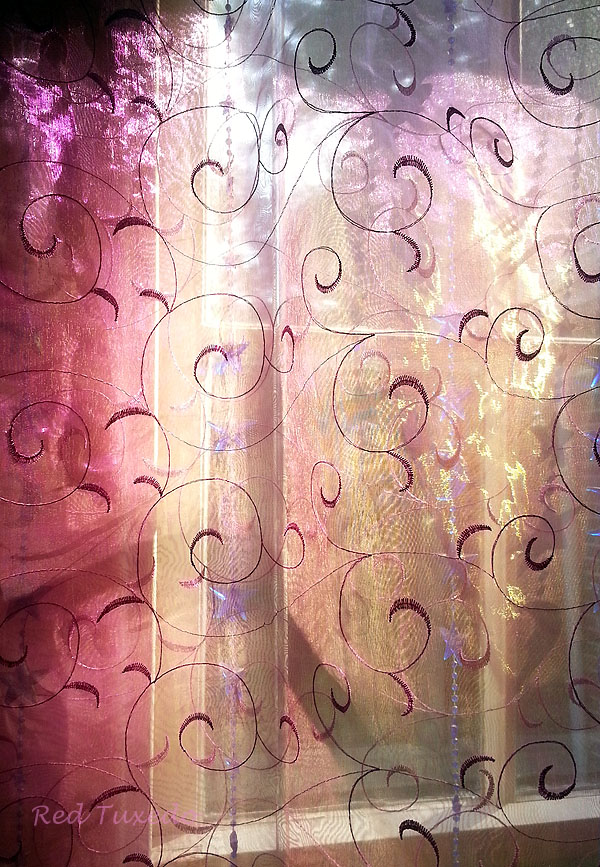



Follow Us!